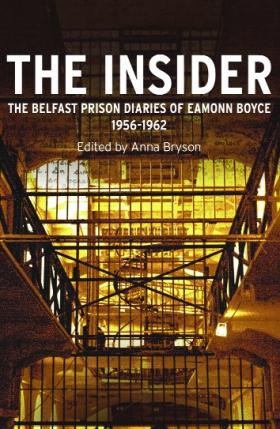The insider: the Belfast prison diaries of Eamonn Boyce, 1956–1962
Published in 20th-century / Contemporary History, Issue 3 (May/Jun 2008), Northern Ireland 1920 - present, Reviews, Volume 16 The insider: the Belfast prison diaries of Eamonn Boyce, 1956–1962
The insider: the Belfast prison diaries of Eamonn Boyce, 1956–1962
Anna Bryson (ed.)
(Lilliput Press, €40)
ISBN 9781843511298
The history of the IRA ‘border campaign’ of 1956–62 is in its infancy. Very few titles have focused on the republican offensive that made Seán South and Fergal O’Hanlon household names of their generation. This writer’s From Vinegar Hill to Edentubber: the Wexford IRA and the border campaign was a 2007 case-study of one brigade area during the post-1948 republican revival. John Maguire’s just-published IRA internments and the Irish government: subversives and the state, 1939–1962 (IAP) focuses on the use of special powers to contain republicanism over two campaigns. Anna Bryson, however, has brought to light the first autobiographical text of the ’fifties campaign in The insider: the Belfast prison diaries of Eamonn Boyce, 1956–1962.
Boyce was the intelligence officer of the IRA’s Dublin unit during the early 1950s and consequently a major player in the resurgence of the republican movement from the nadir of 1946–7. Demoralised in the aftermath of successive failed campaigns and riven by factionalism, the IRA was all but re-established by Tony Magan and a small coterie of authoritative figures. Boyce proved a highly capable asset and, while this part of his republican life is not fully detailed in the book, his accomplishments are very much in evidence. He was captured in the aftermath of the October 1954 raid on Omagh Barracks, Tyrone, in which an IRA party attempted to reprise the highly successful seizure of British war material from Gough Barracks, Armagh, in June. Boyce could have escaped the net but, by honouring the strict orders issued by Magan, declined to use the threat of force to obtain much-needed assistance. Instead, he was one of eight men seized, tried and sentenced for involvement in the descent on Omagh. Boyce received a twelve-year sentence but was released in 1962.
He was one of many ‘fifties men’ who were unable to take part in the armed offensive that commenced in December 1956. Boyce was soon joined in Crumlin Road Jail, Belfast, by two types of republican prisoner: those who had been sentenced for paramilitary offences, and those who had been rounded up and interned by the Stormont regime to destabilise the IRA and Sinn Féin. Sentenced IRA men were segregated from those interned, and much of the Boyce diary is concerned with the vicissitudes of life for politically motivated men in a claustrophobic environment. The entries span the dramatic, the personal and the mundane, which, absorbed collectively, reveal something of the frustration, detachment and tension arising from imprisonment for political offences. The diary was written in Irish and in defiance of prison regulations. The fact that it survived in any form is remarkable, and it is probably one of the only manuscripts of its kind in existence. It is certainly the only one in print, and Bryson is to be commended for facilitating the process.
Boyce’s comments are supported by numerous unsourced footnotes, which were evidently culled from digital newspaper databanks. They are presented in the style of encyclopaedia entries and will undoubtedly benefit students of the period. Bryson contributes a scholarly introductory essay in which some of the wider themes of the memoir are assessed and contextualised. Overall, The insider is a very interesting and rare insight into the events of a near-forgotten campaign.
Ruan O’Donnell lectures in history at the University of Limerick.
















